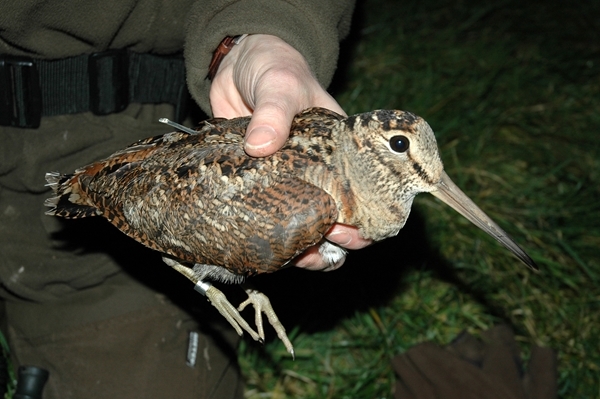
NUMBERS of woodcock were higher than expected across most of Britain this winter, with parts of southern England recording numbers well above average.
This comes as a surprise as there were fears of a poor breeding season after the dry summer of 2018.
It is possible that conditions in spring on the main breeding grounds in Russia and Scandinavia may have resulted in better chick survival immediately after hatching, when the young are vulnerable to cold, wet weather, and that this could have compensated for higher mortality during the dry weather later in the summer.
Summer conditions were also variable across Europe, with central Russia not experiencing the high temperatures recorded in Scandinavia, resulting in regional differences in woodcock breeding success.
The woodcock influx this year coincided with sudden, widespread snowfall in Russia during the third week of November, coupled with easterly winds from central Europe.
Dr Andrew Hoodless, a woodcock expert from the Game & Wildlife Conservation Trust (GWCT), said: “It appears that most areas of southern Britain experienced good numbers of woodcock. It may have been a slightly different situation in the north – with reports from Scotland being more mixed.
“The contrast between north and south may reflect different winter weather conditions, but it seems likely that it also reflects the fates of different breeding populations: with Scotland’s wintering population consisting of a higher proportion of woodcock from Scandinavia rather than Russia.
“It was good to see woodcock numbers bounce back quickly after the relatively poor season of 2017/18 and many shoots waiting until at least December to assess numbers before deciding on whether to have a day at woodcock.”
Dr Hoodless and PhD student Chris Heward have been out tagging woodcock this year at two sites in southern England to provide valuable information on this iconic species.
At the sites in Hampshire and Cornwall, they catch and ring as large a sample of woodcock as possible and gather data on survival and site fidelity by recapturing birds ringed in previous years.
They have recently completed the second of their Cornish trips this year, making 170 captures and ringing 145, which is about 40 more than last winter.
Chris said: “Our first two nights suggested there might be more, particularly given that we have been ringing at this site for several years now. That said, around two thirds of the woodcock we caught were juveniles hatched in 2018, meaning that there were plenty of unringed youngsters to dilute the numbers of ringed adults.”
To keep up to date with GWCT’s woodcock research, visit https://www.woodcockwatch.com/
Notes to editors
The Game & Wildlife Conservation Trust – providing research-led conservation for a thriving countryside. The GWCT is an independent wildlife conservation charity which has carried out scientific research into Britain’s game and wildlife since the 1930s. We advise farmers and landowners on improving wildlife habitats. We employ more than 60 post-doctoral scientists and other research staff with expertise in areas such as birds, insects, mammals, farming, fish and statistics. We undertake our own research as well as projects funded by contract and grant-aid from government and private bodies.
For information, contact:
Eleanor Williams
Telephone: 07592 025476
Email: press@gwct.org.uk